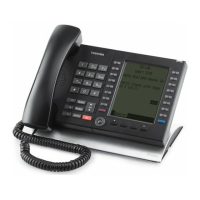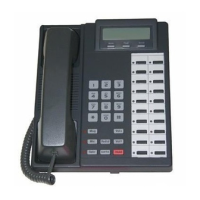Do you have a question about the Toshiba IPedge IP5000 Series and is the answer not in the manual?
Details the regulatory requirements for radio frequency interference and compliance.
Explains potential interference issues and user responsibilities for mitigation.
Informs users about FCC rules requiring hearing aid compatibility for business telephones.
Lists US patents that may cover products like G.729a.
Outlines the acceptable use policy for VIPedge services.
Refers to the End User License Agreement for VIPedge software.
Warns about the IPedge/VIPedge system's limitations regarding emergency (911) services.
Advises on changing default user names and passwords to prevent unauthorized access.
Defines key terms used throughout the End User License Agreement.
Details the non-exclusive, non-transferable license granted for software use.
Explains that Mitel and its suppliers reserve all rights to software and documentation.
Describes the terms and conditions for using open source software components.
Outlines Mitel's liability and user's indemnification for intellectual property claims.
Specifies the limited warranties provided for the software and media.
Defines the limitations of Mitel's liability regarding software use and performance.
Covers the installation procedures for IP5000-series IP Telephones on IPedge/VIPedge systems.
Lists the IP5000-series telephones and add-on modules supported by IPedge/VIPedge.
Provides physical dimensions and tilt angles for IP5000-series telephones.
Details requirements for station wiring, including cable types and power options (PoE/AC).
Explains how to install add-on modules (ADM) to IP5000-series telephones.
Describes the start-up sequence indicators for IP5000-series telephones.
Guides on connecting IP telephones to IPedge or VIPedge systems.
Provides procedures to reset an IP Telephone to its factory default settings.
Details connecting the IP5122-SDC to a CO Line for analog functionality.
Explains the initialization options for the IP5122-SDC, including ACO Default.
Specifies the required IPT software versions for IP5000 Series telephones.
Explains the licensing requirements for stations in an IPedge system.
Details the licensing requirements for telephones in a VIPedge solution.
Covers station assignment, adding, editing, and deleting stations in the system.
Describes user preferences like Prime DN, Station Type, and Call Forwarding.
Explains how to assign functions to programmable feature buttons on IP telephones.
Details the process of setting or automatically assigning an IP address for the telephone.
Describes the telephone's initial mode and how it contacts the VIPedge or IPedge server.











